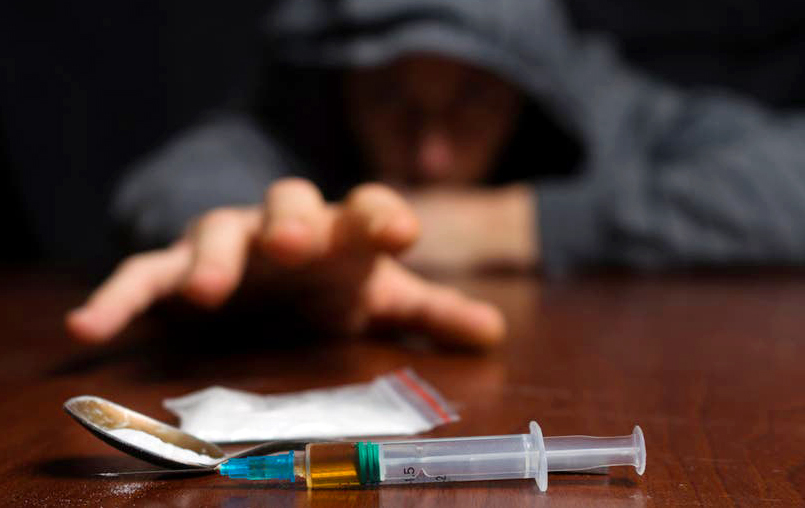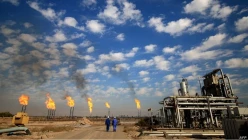Drug abuse: Iraq's new adversary

Shafaq News / Iraq has long been plagued by conflicts, but now a crisis of a different sort is taking hold. The narcotics trade and abuse pose new threats and risks, forever changing societies whose conservative norms had usage in check.
After years of conflict with ISIS, Iraq's security forces are now fighting an undeclared war against a new enemy, crystal methamphetamine, a highly addictive and dangerous drug that attacks the central nervous system and devastates public health.
Crystal meth "rocks" are smoked, snorted, swallowed, or injected, giving users a rush of euphoria. But the drug, which is increasingly seen in Iraq, can cause severe physical and psychological problems.
Crystal meth is widely consumed in the southern provinces of Iraq, with official statistics indicating that Basra alone has about 30,000 drug addicts.
According to experts, drugs can initially be divided into three groups: natural, psychoactive, and addictive. While psychotropic substances are divided into sedatives, stimulants, and hallucinogens, natural drugs include poppies, marijuana, and cannabis. In contrast to steroids, which are split into crystal meth, khat, and cocaine, tranquilizers are divided into three categories: heroin, opium, and marijuana.
As for hallucinogens (LSD), specialists explain that "LSD is an abbreviation of diethylamide citric acid, a solid substance without color, odor, or taste, a compound of strong hallucinogens and effects on the muscle, and are often found in the form of tablets or stamps, such as Captagon, and (pink) and (blue) pills."
Narcotic substances have varying effects, but "The most hazardous is crystal meth because it instantly causes addiction and penetrates the brain toxically. Simply consuming small amounts of it can turn the user into an addict who develops psychological disorders, suicidal tendencies, aggressive behavior, heart disease, high blood pressure, and numerous other health problems," according to Dr. Emad Abdul Razzaq, the National Advisor for Mental Health at the Ministry of Health.
As for other narcotic substances, Abdul Razzaq explained that there are "zero one pills, Captagon, and other oral chemicals. There are also psychotropic substances such as Lyrica, while the least used are marijuana and heroin."
Psychiatrist Dr. Mehdi Balasem explained, "Biologically, addiction involves many different neurotransmitters in the brain, but the most well-known ones in situations of addiction are almost exclusively found in four areas, namely endorphins, dopamine, adrenaline, and cerebral cortex."
According to Balasem, "traumas in early childhood leave traces that can be evoked in adulthood, unlike everyday events that are forgotten, where there are two types of memory; explicit, which remembers everyday events and do not extend to early childhood, and implicit, through which a person can remember the traumatic events that took place since the first weeks of his life."
"If implicit memory is active in adolescence or youth while the neurotransmitters are inactive, the person may resort to drug abuse to stop them by activating brain neurotransmitters, such as dopamine for curiosity, joy, happiness, and love, endorphins for joy, adrenaline for activity, and endorphins for joy."
"Dopamine, for instance, increases by 100% in emotionally charged circumstances, by 300% when cocaine -a neuro stimulant- is used, and by 1200% when crystal meth is consumed. Since a person becomes addicted to this narcotic quickly after just one use, it is extremely harmful and quickly spreads throughout society due to its low cost."
He also pointed out that "treatment differs according to the addictive substance, e.g., crystal meth is a highly addictive substance, and destroys the liver, brain, and heart, and may cause insanity after prolonged use."
Colonel Bilal Sobhi, Director of Relations and Media at the Anti-Narcotics Directorate at the Ministry of Interior, confirmed that "more than 16,800 people accused of dealing, promoting, and using narcotic substances were arrested during the past year," noting that "the majority of these defendants are young people, ranging in age from 18 to 35 years, and there are 500 juveniles, as well as more than 250 women."
In his statement to Shafaq News Agency, Sobhi noted that "citizens had a major role in the arrests, by calling the hotline of the General Directorate for Drug Control, to report these criminal gangs," adding, "Drug users are estimated at 45% to 50%, and traders and promoters from 50% to 55%."
"The law gave users an opportunity through Article 40 of the Narcotics Law, which stipulates that no criminal case shall be filed against every person who has used narcotic drugs and psychotropic substances and went voluntarily for treatment in specialized hospitals. Also, the capabilities of the Ministries of Health and Labor and Social Affairs are harnessed to rehabilitate them, unlike those who are arrested," Colonel Sobhi stated.
He further noted, "To separate dealers from users, the Interior Minister ordered building camps in Iraq's governorates in collaboration with the Ministry of Defense. Those camps will be built to separate them, providing them with specialized cadres and therapeutic materials."
Ahmed al-Abadi, a legal expert, explained that "According to Article 32 of the Narcotic Drugs and Psychotropic Substances Law No. 50 of 2017, anyone caught importing, producing, manufacturing, possessing, or purchasing narcotic substances, psychotropic substances, or chemical precursors faces up to three years in prison and a fine of up to ten million dinars. This means that all users face the same punishment. This statement is unambiguous, does not distinguish between different substances, and stipulates the same punishment for all defendants."





